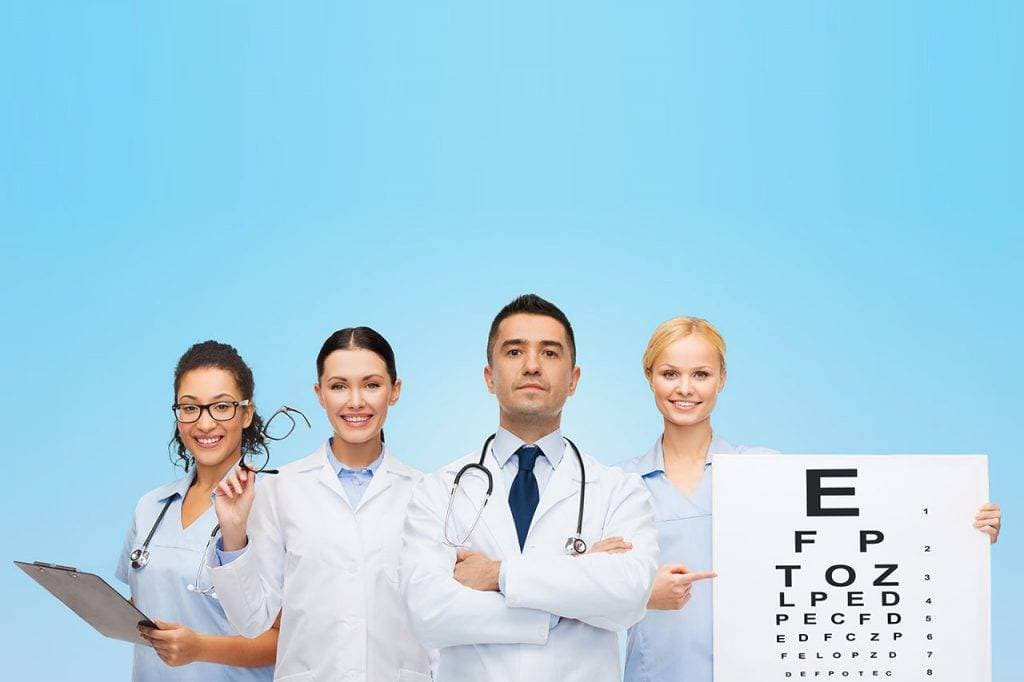The Relevance of Regular Exams with an Eye Doctor Optometrist
The Relevance of Regular Exams with an Eye Doctor Optometrist
Blog Article
Checking Out the current Technological Improvements in Optometry and What They Mean for Eye Doctors
In the ever-evolving field of optometry, recent technical developments are improving how professionals come close to eye care. From the precision of Optical Coherence Tomography to the nuanced understandings used by AI-driven diagnostic tools, these innovations are establishing new standards in person evaluation and treatment. Teleoptometry is positioned to redefine ease of access, making sure that know-how goes beyond geographical constraints. As these developments penetrate the technique, eye doctors are faced with the difficulty of accepting these tools to boost client results. Yet, the inquiry remains: exactly how will these technical shifts redefine the duties and responsibilities within the career?
Technologies in Diagnostic Equipment
Progressing the area of optometry, technologies in diagnostic tools have actually changed the method eye treatment professionals assess and diagnose aesthetic problems and ocular problems. The previous decade has observed substantial technological advancements, allowing even more thorough and exact analyses. Optical Comprehensibility Tomography (OCT), for instance, offers high-resolution cross-sectional pictures of the retina, permitting the early detection of diseases such as glaucoma and age-related macular deterioration. This non-invasive imaging technique has come to be essential in contemporary optometric practice.
Another key advancement is the intro of innovative corneal topography systems, which map the surface area curvature of the cornea with precision. These tools are especially valuable for fitting call lenses and identifying corneal conditions. Moreover, digital retinal imaging has changed standard ophthalmoscopy, providing thorough, breathtaking sights of the retina that assist in detailed aesthetic assessments.
The growth of wavefront aberrometry has also been crucial, making it possible for the evaluation of refractive mistakes with unparalleled precision (Eye Doctor Optometrist). This modern technology aids in personalizing rehabilitative lenses and improving medical results for refractive surgeries. Jointly, these analysis advancements encourage eye doctors to deliver exceptional individual care, guaranteeing early treatment and tailored treatment methods, ultimately enhancing aesthetic health and wellness end results
AI in Person Monitoring
Building on the structure of cutting-edge analysis tools, the incorporation of expert system (AI) in person management stands for a transformative jump for optometry. AI systems are increasingly employed to improve efficiency, precision, and customization in patient treatment. By examining substantial amounts of information, AI can identify patterns and predict prospective eye problems, allowing eye doctors to tailor interventions better. This capacity is critical in taking care of persistent eye diseases such as glaucoma and diabetic person retinopathy, where very early discovery and continual surveillance are essential.
Additionally, AI-driven systems help with structured client interactions and management procedures. Automated scheduling, virtual consultations, and customized follow-up strategies not just enhance person satisfaction yet likewise maximize time administration for specialists. These systems can triage patients based on the seriousness of their problems, ensuring that those in vital requirement obtain punctual attention.
In addition, AI improves decision-making by providing optometrists with evidence-based referrals and therapy paths. By integrating information from digital wellness records, AI tools provide insights that inform scientific decisions, lowering the threat of mistakes and improving patient results. As AI continues to evolve, its function in patient administration will likely broaden, reshaping the landscape of optometric treatment.
Developments in Retinal Imaging
In the world of optometry, retinal imaging has experienced exceptional technological developments that are enhancing analysis abilities and individual care. Advancements such as Optical Coherence Tomography (OCT) and fundus digital photography have revolutionized just how optometrists imagine and assess the retina. OCT, in certain, gives high-resolution, cross-sectional pictures of the retina, enabling for the comprehensive exam of its layers. This ability is indispensable for early discovery and monitoring of conditions like glaucoma, diabetic person retinopathy, and age-related macular deterioration.
Improved imaging methods like OCT angiography are additional refining analysis precision. This non-invasive technique maps blood circulation in the retina, supplying important insights right into vascular wellness without the demand for color injections. Additionally, adaptive optics modern technology is being integrated right into retinal imaging systems to correct eye aberrations, supplying unprecedented image clearness. Such advancements promote the recognition of minute retinal changes that could represent condition progression.
Additionally, innovations in fabricated intelligence are enhancing retinal imaging by enabling automatic analysis of big datasets. These systems help optometrists in recognizing patterns indicative of pathology, therefore improving analysis precision and effectiveness. Collectively, these technologies are transforming retinal imaging right into a foundation of contemporary eye treatment, improving outcomes and expanding healing opportunities.
Teleoptometry's Expanding Duty
Teleoptometry is significantly ending up being a vital part of eye treatment, driven by innovations in click to read more digital interaction and analysis devices. As optometry accepts digital transformation, teleoptometry helps with remote examinations, allowing optometrists to prolong their services beyond traditional boundaries. This is particularly advantageous in rural and underserved locations where accessibility to specialized eye care is frequently limited. By leveraging high-resolution video clip conferencing and progressed retinal imaging, eye doctors can conduct comprehensive eye examinations from afar, making certain timely medical diagnosis and treatment.
The assimilation of man-made intelligence (AI) more enhances teleoptometry, enabling the evaluation of visual data and assisting in the discovery of ocular problems such as glaucoma and diabetic retinopathy. AI-powered algorithms can swiftly translate complicated imaging information, giving eye doctors with useful understandings that strengthen professional decision-making.
Moreover, teleoptometry supports continuity of care through seamless assimilation with electronic health and wellness documents (EHRs), allowing eye doctors to preserve comprehensive patient histories. When consulting with various experts., this makes sure that clients receive personalized and you can try this out constant treatment even.
In spite of these benefits, challenges stay, consisting of guaranteeing information security and taking care of individual assumptions. Nevertheless, teleoptometry represents a significant stride towards even more accessible, reliable, and patient-centered eye care. As technology advances, its duty is positioned to increase better.

Future Trends in Eye Treatment
A myriad of cutting-edge fads is readied to reshape the future of eye care, driven by technological developments and the progressing requirements of individuals. One significant fad is the integration of fabricated intelligence (AI) in diagnostics, which assures to boost the accuracy and effectiveness of eye evaluations. AI formulas can analyze large quantities of data from retinal images, potentially identifying conditions like diabetic retinopathy and glaucoma earlier than conventional approaches.
Furthermore, individualized medicine is gaining traction in optometry, with hereditary testing educating personalized treatment plans. This strategy aims to enhance patient results by customizing treatments to specific hereditary accounts. Wearable innovation, such as smart get in touch with lenses, is also coming up, supplying real-time monitoring of intraocular pressure or glucose levels, therefore giving constant understandings right into ocular and systemic health and wellness.
The fostering of augmented fact (AR) and virtual reality (VIRTUAL REALITY) in training and individual education is an additional emerging pattern. These modern technologies provide immersive experiences that can improve understanding and abilities both for patients and eye doctors. As these fads develop, optometrists need to stay abreast of technical advancements to give sophisticated treatment, ensuring improved person results and fulfillment in the dynamic landscape of eye care.
Final Thought

Collectively, these analysis developments empower eye doctors to provide premium patient care, making certain early intervention and tailored therapy strategies, inevitably boosting aesthetic health end results.

As these modern technologies continue to progress, eye doctors should adjust and integrate them into practice, ultimately optimizing operations effectiveness and boosting the standard of eye care delivered to individuals.
Report this page